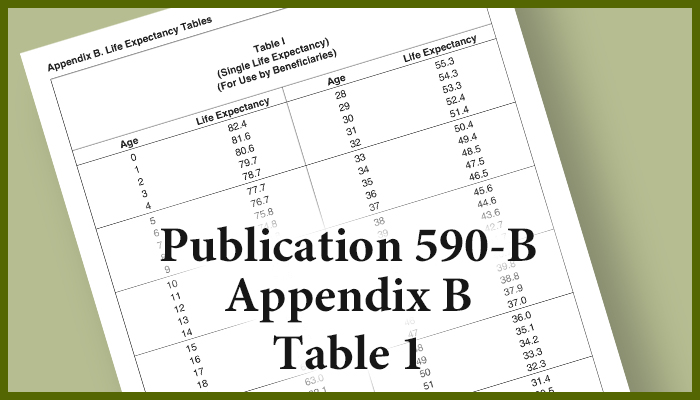You, Your Heirs and Your IRAs, Part I of II
You, Your Heirs and Your IRAs, Part I of II
by David D. Holland
My name is Hady LaGrotta and I work at Holland Financial as the Vice President of Planning. In this two-part series, David Holland has asked me to share a little bit about inherited IRAs (Individual Retirement Accounts).
An IRA is a tax-sheltered account. The IRS mandates that you must start taking Required Minimum Distributions (RMDs) from your IRA account(s) when you reach age 70½ (the Requirement Beginning Date or RBD). But what happens if you pass away? A lot depends on who you designate as the beneficiary of the IRA. There are three categories: 1. Spouse, 2. Non-Spouse, and 3. Non-Natural Persons, and each is handled differently.
 Spouse: If the IRA owner dies before 70½, the spouse’s options are: A) Treat the IRA as his/her own, B) Take the entire balance by the end of the 5th year following the death, or C) Using the IRS Single Life Expectancy Table (Table 1), begin withdrawals when the owner would have turned 70½. If the IRA owner dies after 70½, the spouse can: A) Treat the IRA as his/her own, B) Continue withdrawals based upon the spouse’s life expectancy using Table 1, or C) Continue withdrawals based on the deceased’s age using Table 1 and reduce the beginning life expectancy by 1 for each subsequent year.
Spouse: If the IRA owner dies before 70½, the spouse’s options are: A) Treat the IRA as his/her own, B) Take the entire balance by the end of the 5th year following the death, or C) Using the IRS Single Life Expectancy Table (Table 1), begin withdrawals when the owner would have turned 70½. If the IRA owner dies after 70½, the spouse can: A) Treat the IRA as his/her own, B) Continue withdrawals based upon the spouse’s life expectancy using Table 1, or C) Continue withdrawals based on the deceased’s age using Table 1 and reduce the beginning life expectancy by 1 for each subsequent year.
Heirs Other Than Spouse: If the IRA owner dies before 70½, two options are available: A) Take the entire balance by the end of the 5th year following the owner’s death or B) Take withdrawals per Table 1; use the beneficiary’s age at the end of the year following the owner’s death and reduce beginning life expectancy by 1 for each subsequent year. If the IRA owner dies after 70½, the beneficiary has only one option – to continue with RMDs using Table 1 (after determining the age of the eldest beneficiary) and reduce the beginning life expectancy by 1 for each subsequent year. (The owner’s RMD can be taken for the year of death.)
Non-Natural Persons (estate, charity, some trusts): If the IRA owner dies before 70½, the entire balance must be distributed by the end of the 5th year following the owner’s death. If the IRA owner dies after 70½, Table 1 is used to continue with RMDs using the owner’s age and reducing beginning life expectancy by 1 for each subsequent year.
Yes, I know this is all very complicated. Next week, I’ll share how an IRA beneficiary scenario can play out in real life.
